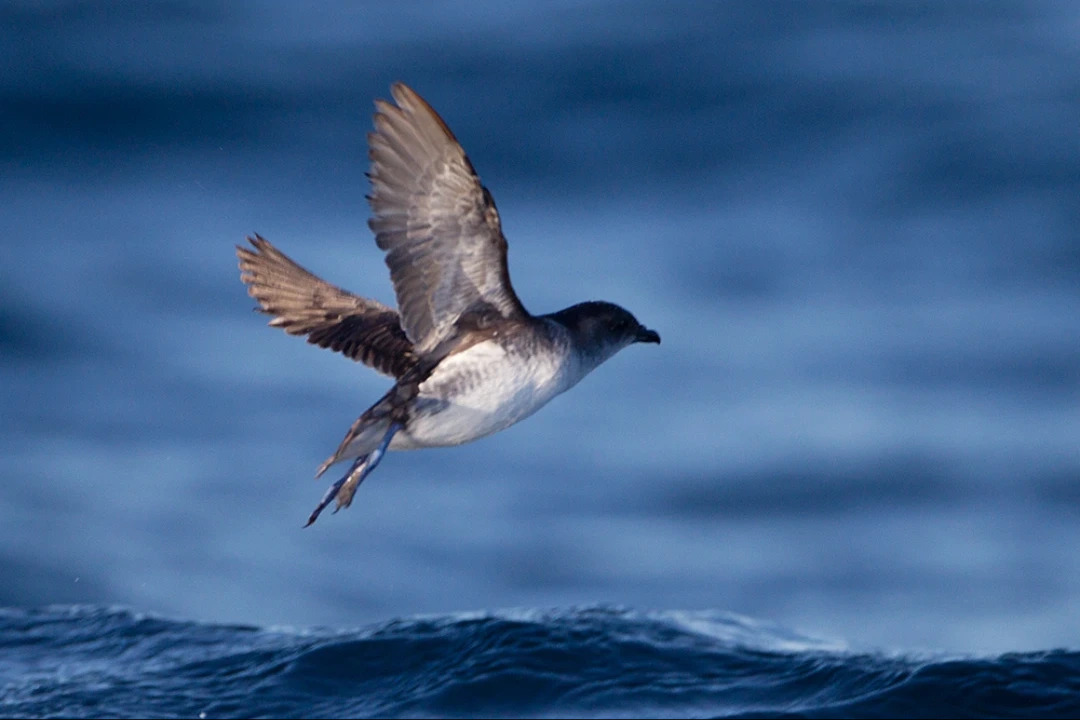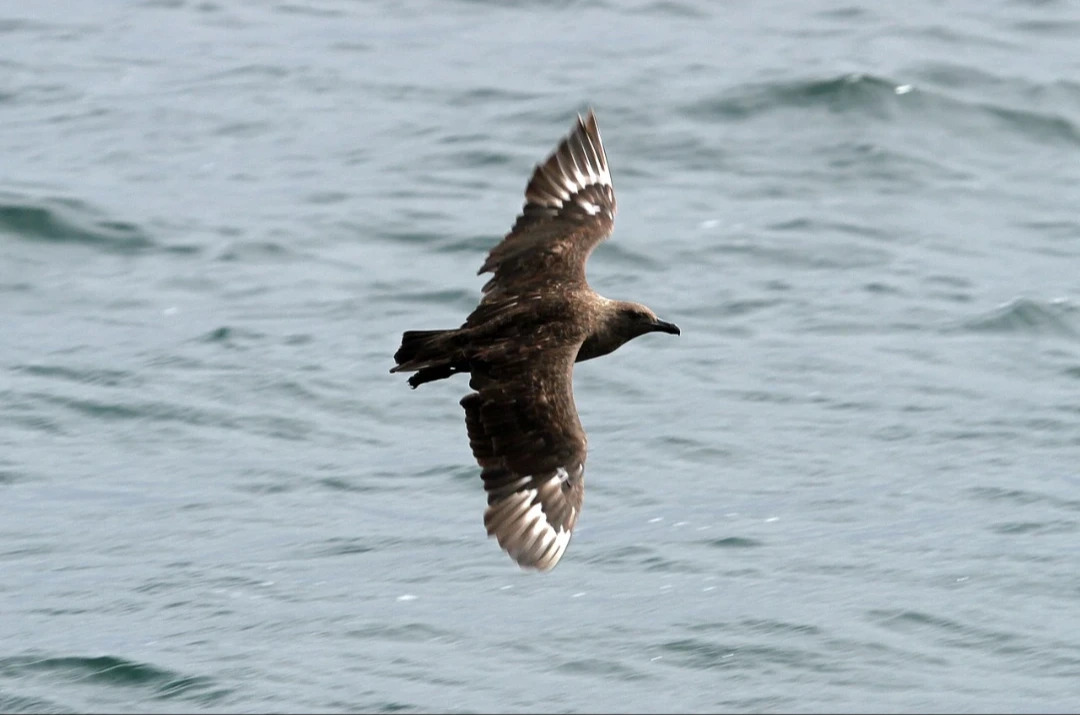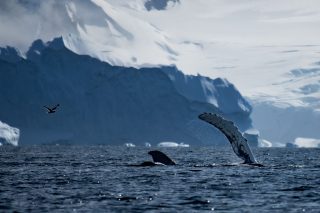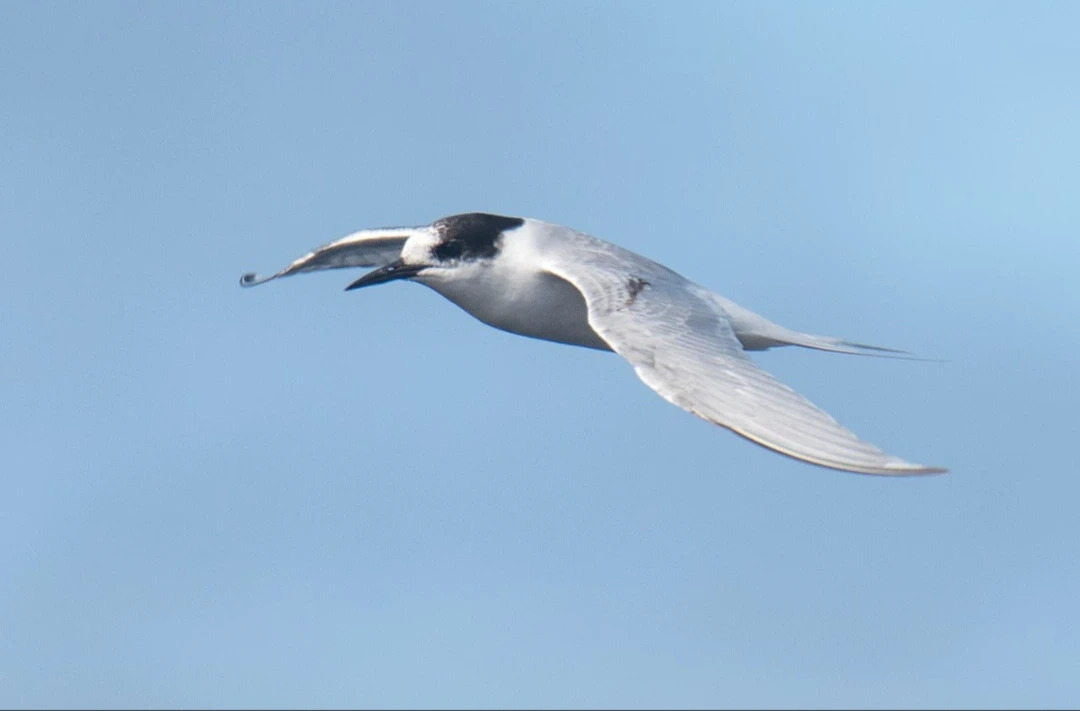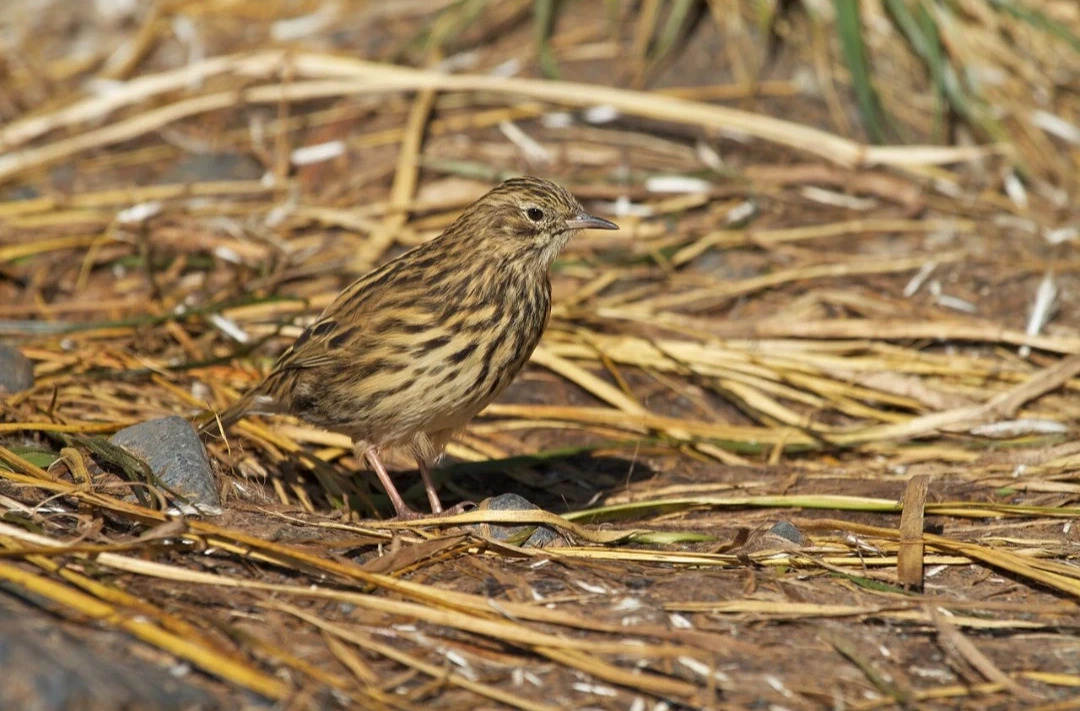Albatross of the Southern Ocean
Albatrosses are large seabirds that inhabit the Southern Ocean, notable for their impressive wingspans, which enable them to glide long distances with minimal energy expenditure. These birds are primarily pelagic, spending the majority of their lives at sea and only returning to land to breed.
They are well-adapted to the harsh and windy conditions of the Southern Ocean, with species such as the wandering albatross capable of covering thousands of kilometres in a single foraging trip.
The Southern Ocean provides a rich environment for albatrosses, offering abundant marine resources like squid and fish. However, many albatross species are endangered due to threats such as longline fishing, which often leads to accidental bycatch, and environmental pollutants. Conservation efforts focus on mitigating bycatch through changes in fishing practices and protecting breeding grounds to support population recovery.
Wandering Albatross (Diomedea exulans)
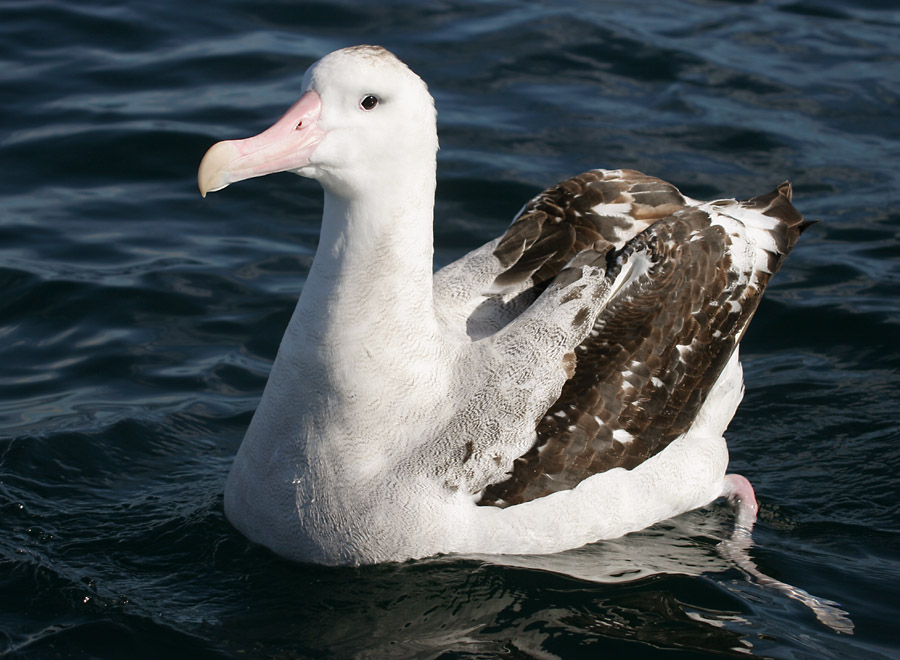
The wandering albatross (Diomedea exulans) is a large seabird renowned for its impressive wingspan, reaching up to 3.5 metres. Found primarily over the Southern Ocean, this bird spends most of its life in flight, using wind currents to cover extensive distances with minimal effort. Its diet consists of fish and squid, caught near the ocean’s surface, and its specialised glands allow it to drink saltwater.
Wandering albatrosses breed only every two years, forming long-term monogamous pairs and sharing incubation duties. However, threats from fishing bycatch and ocean pollution endanger their populations, making conservation efforts crucial.
Appearance and size
The Wandering Albatross has the longest wingspan of any living bird, reaching up to 3.5 meters. It features predominantly white plumage with black-tipped wings and a pinkish bill.
Behaviour
Renowned for their ability to glide over the ocean for hours without flapping their wings, they exploit wind currents to travel vast distances.
Diet
Primarily feeding on fish, squid, and krill, they are capable surface feeders, snatching prey from just below the water’s surface.
Reproductive cycle
Breeding every two years, they lay a single egg on isolated island territories. Both parents share incubation duties over an extended period.
The wandering albatross lives primarily in the open Southern Ocean, with its habitat stretching across vast areas around sub-Antarctic islands and near Antarctica.
It breeds on remote islands, including South Georgia, the Crozet Islands, and the Kerguelen Islands, where it forms nesting colonies on grassy or rocky slopes. These islands provide essential breeding grounds, but the wandering albatross spends most of its life at sea, where it soars over oceanic waters, only returning to land for nesting and raising its young.
Black-browed Albatross (Thalassarche melanophris)
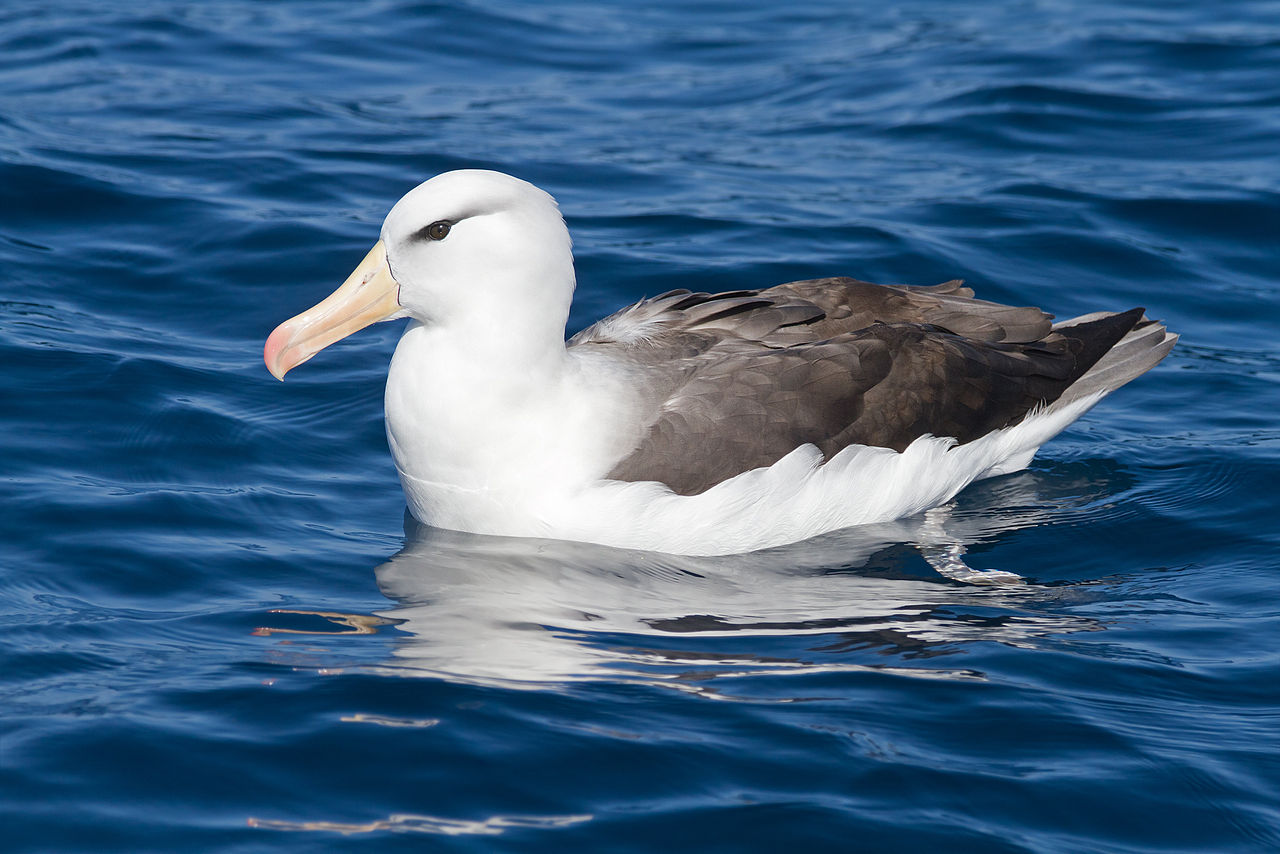
The black-browed albatross (Thalassarche melanophris) is a medium-sized seabird distinguished by the dark, distinctive eyebrow-like markings above its eyes. Native to the Southern Ocean and often seen around the Falkland Islands, this species has a wingspan of up to 2.4 metres, allowing it to glide long distances over open water.
Feeding primarily on fish, squid, and crustaceans, the black-browed albatross often follows fishing vessels to scavenge for food. Known for its dense colonies, it returns to land annually to breed, typically on cliff edges. Despite being one of the most populous albatross species, it faces threats from bycatch in fisheries, underscoring the need for targeted conservation measures.
Appearance
This species is identified by its striking black eyebrow and underwing. It has a wingspan of up to 2.5 meters, with a dark upper bill and grey neck.
Behaviour
Black-browed Albatrosses are highly social, often seen feeding in large flocks at sea. They are known for their agility in flight, capable of navigating through severe weather conditions.
Diet
Their diet consists mainly of fish, squid, and krill, captured by surface seizing and occasional shallow dives.
Reproductive Cycle
They return annually to the same nesting sites, laying a single egg. The breeding season is marked by elaborate courtship displays.
Habitat
The species breeds on islands in the Falklands, South Georgia, and along the Scotia Arc, with extensive foraging ranges that include the Drake Passage.
Grey-headed Albatross (Thalassarche chrysostoma)
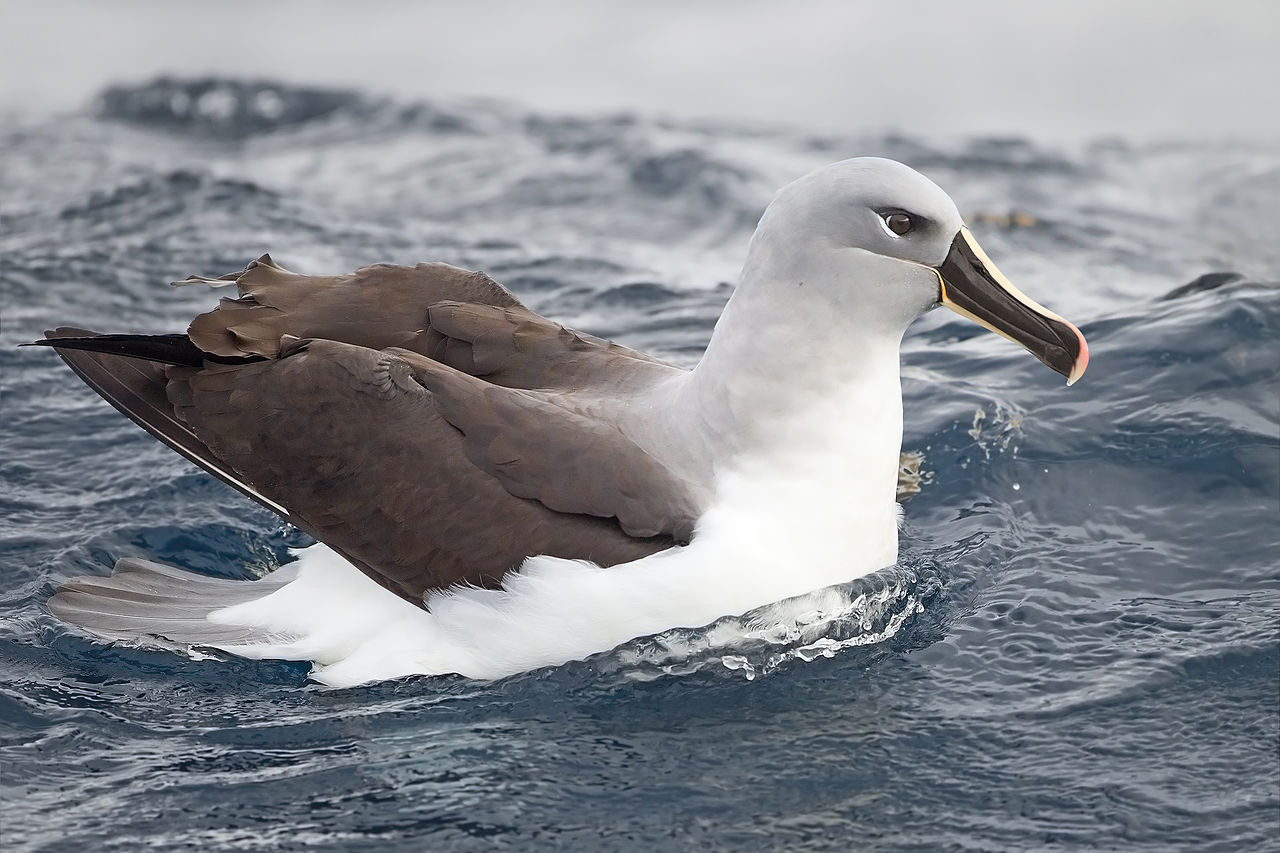
The grey-headed albatross (Thalassarche chrysostoma) is a striking seabird known for the grey plumage on its head and distinctive yellow bill. With a wingspan reaching around 2.2 metres, it is well adapted to the windswept Southern Ocean, where it spends much of its life in flight.
This species primarily feeds on squid and fish, often covering vast distances to find food. Breeding occurs on isolated islands, such as South Georgia, with pairs forming strong monogamous bonds. However, the grey-headed albatross faces significant threats from longline fishing, which has led to declining populations, making conservation efforts increasingly urgent for its survival.
Appearance
Distinguished by its grey head and neck, the Grey-headed Albatross has a wingspan of approximately 2.2 meters. Its body is predominantly white with a distinctive black bill.
Behaviour
These birds are exceptional flyers, spending most of their life at sea, and are less often observed near land except during breeding seasons.
Diet
They feed on a mix of fish, squid, and crustaceans, employing both surface seizing and pursuit diving techniques.
Reproductive Cycle
They breed every other year, with a preference for nesting on steep, vegetated cliffs on isolated islands.
Habitat
Their breeding colonies are located on sub-Antarctic islands, with a significant presence in the Drake Passage and surrounding Southern Ocean waters.
Light-mantled Albatross (Phoebetria palpebrata)
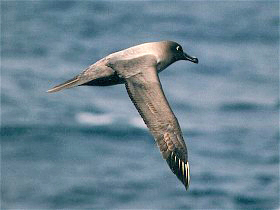
The light-mantled albatross (Phoebetria palpebrata) is an elegant seabird, noted for its soft, grey-brown plumage with a lighter “mantle” on its back and wings. Found across the Southern Ocean, it has a wingspan of up to 2.2 metres and is highly adapted for long-distance gliding. Its diet consists primarily of squid and fish, which it catches near the ocean’s surface.
The species is known for its unique and graceful aerial courtship displays, often flying in synchronised pairs. Breeding in remote island colonies, the light-mantled albatross faces challenges from fisheries bycatch and environmental changes, making conservation efforts vital for maintaining stable populations.
Appearance
The Light-mantled Albatross is known for its smoky-grey plumage and slender wings, which span up to 2 meters. It has a distinctive eye-ring and a pale bill.
Behaviour
This species is solitary compared to other albatrosses, known for its beautiful synchronized flight displays with mates.
Diet
It primarily feeds on squid, fish, and krill, often foraging over deep oceanic waters.
Reproductive Cycle
The Light-mantled Albatross breeds biennially, constructing nests on cliff ledges where they lay a single egg.
Habitat
Found breeding on remote sub-Antarctic islands, they roam widely across the Southern Ocean, including areas near the Antarctic Peninsula and the Drake Passage.
Sooty Albatross (Phoebetria fusca)
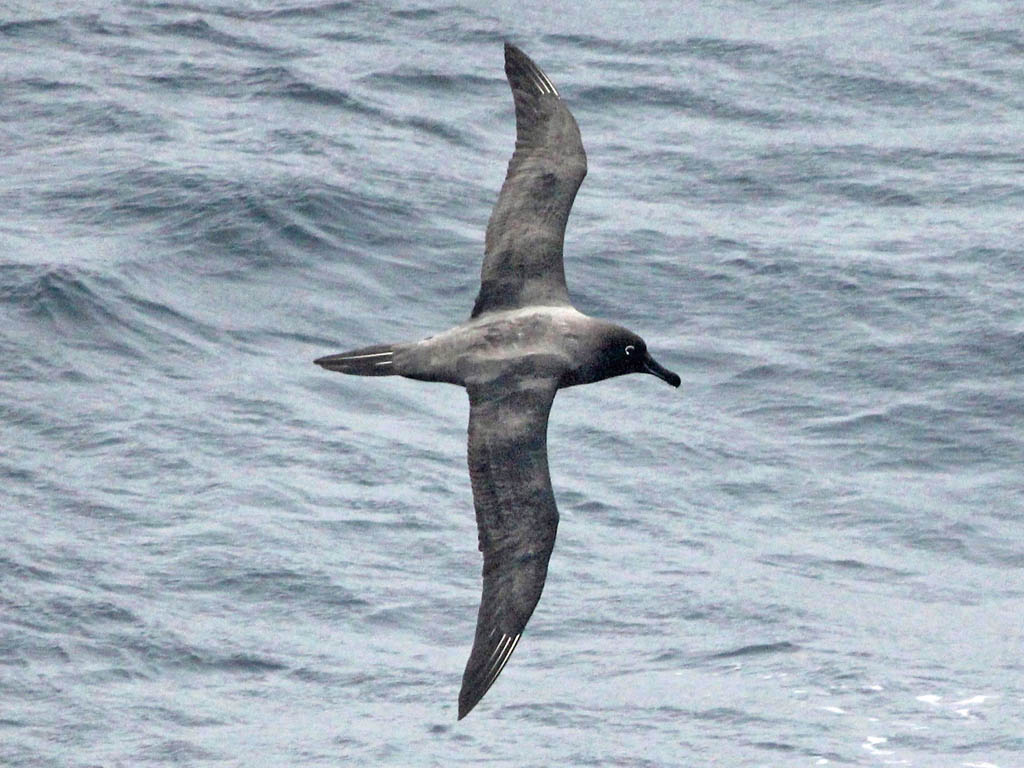
The sooty albatross (Phoebetria fusca) is a dark-plumaged seabird, easily recognised by its slender build and striking sooty-brown feathers with a pale crescent around the eye. Inhabiting the Southern Ocean and subtropical regions, this species has a wingspan of up to 2 metres, allowing it to glide efficiently over long distances in search of squid and fish.
Known for nesting on rugged cliffs of remote islands, such as those in the Tristan da Cunha group, the sooty albatross has a slow reproductive rate, breeding only once every two years. Threatened by bycatch in fisheries and environmental shifts, it requires focused conservation efforts to prevent further population declines.
Appearance
Known for its elegant silhouette and dark, sooty-grey plumage across its entire body, which contrasts with its striking white eyes. It has a slender wingspan of up to 2 meters, a distinctive feature that enhances its graceful flight. The bill is dark with a slight curve at the tip, facilitating its feeding habits.
Behaviour
Noted for its solitary nature outside the breeding season, the Sooty Albatross is a highly skilled flier that can glide over the ocean for hours on end. It demonstrates a preference for the open ocean, rarely seen near land except during breeding periods. This species is also recognized for its quiet demeanour, with vocalizations primarily occurring during mating rituals.
Diet
Its diet predominantly consists of cephalopods, fish, and crustaceans. It utilizes its ability to skim the ocean’s surface to catch prey, occasionally diving to pursue deeper-swimming targets.
Reproductive Cycle
The breeding pattern is biennial, with considerable effort invested in raising a single chick. Nesting takes place on steep, inaccessible cliff faces or amongst dense vegetation on remote islands, where nests are built from mud, grass, and feathers. Both parents share responsibilities for incubating the egg and feeding the chick.
Habitat
Breeding occurs on the sub-Antarctic islands. Their non-breeding range is extensive, covering much of the Southern Hemisphere’s oceans, including the Southern Atlantic and Indian Oceans. They are occasional visitors to the Antarctic Peninsula and the surrounding Southern Ocean waters.
Southern Royal Albatross (Diomedea epomophora)
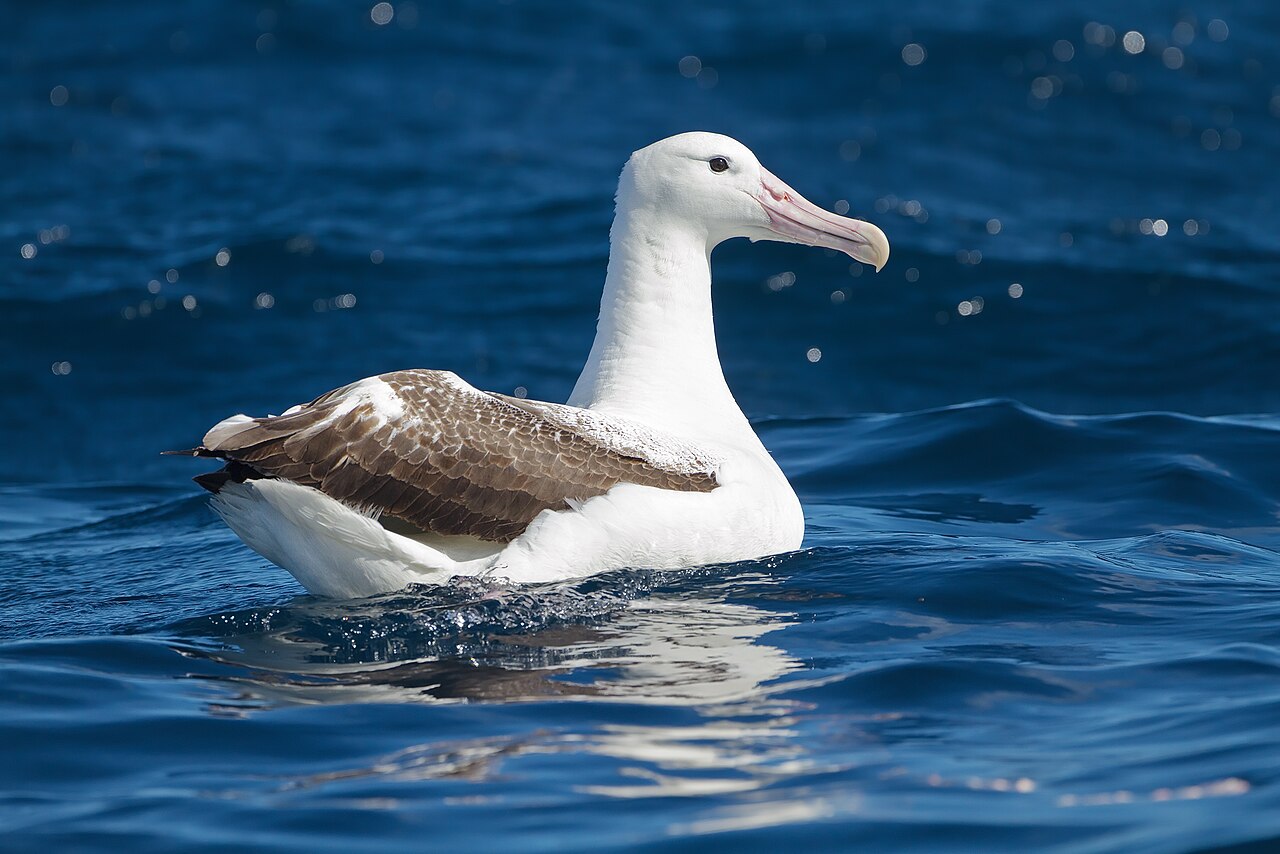
The southern royal albatross (Diomedea epomophora) is one of the world’s largest seabirds, boasting a wingspan that can exceed 3 metres. Found mainly in the Southern Ocean, especially around New Zealand’s subantarctic islands, this species is distinguished by its predominantly white plumage and black wingtips.
The southern royal albatross primarily feeds on fish, squid, and crustaceans, often foraging over vast ocean areas. Breeding occurs biennially, with pairs forming long-lasting monogamous bonds and returning to the same nesting sites. Though relatively resilient, the species faces threats from habitat degradation, human disturbance, and bycatch in fishing operations, highlighting the need for ongoing conservation efforts to protect this iconic albatross.
Appearance
The Southern Royal Albatross is a large bird, characterized by its impressive wingspan that can reach up to 3.5 meters, making it one of the largest of the albatross species. It has a predominantly white plumage with black flight feathers on its wings. The bird’s large, hooked bill is pink with a black cutting edge, distinguishing it from other species.
Behaviour
This species is known for its majestic flight, capable of gliding over the ocean for hours without a single flap, utilizing the wind currents to conserve energy. The Southern Royal Albatross is mostly solitary when at sea but returns to colonies on remote islands for breeding.
Diet
It feeds mainly on squid, fish, and krill, caught by surface seizing or shallow diving. Its foraging trips can cover thousands of kilometers from the nesting site, demonstrating remarkable navigation and endurance skills.
Reproductive Cycle
The Southern Royal Albatross has a lengthy breeding cycle, only laying one egg every two years. The nests are large mounds of vegetation, soil, and feathers, typically situated on grassy plains or plateaus. Both parents share the responsibility of incubating the egg and feeding the chick, a process that demands considerable parental investment over many months.
Habitat
Breeding primarily occurs on sub-Antarctic islands of New Zealand, notably the Campbell Island and the Auckland Islands. Outside the breeding season, the Southern Royal Albatross disperses across the Southern Ocean, frequently flying over the Drake Passage and occasionally ranging as far north as the equator.
Shy Albatross (Thalassarche cauta)
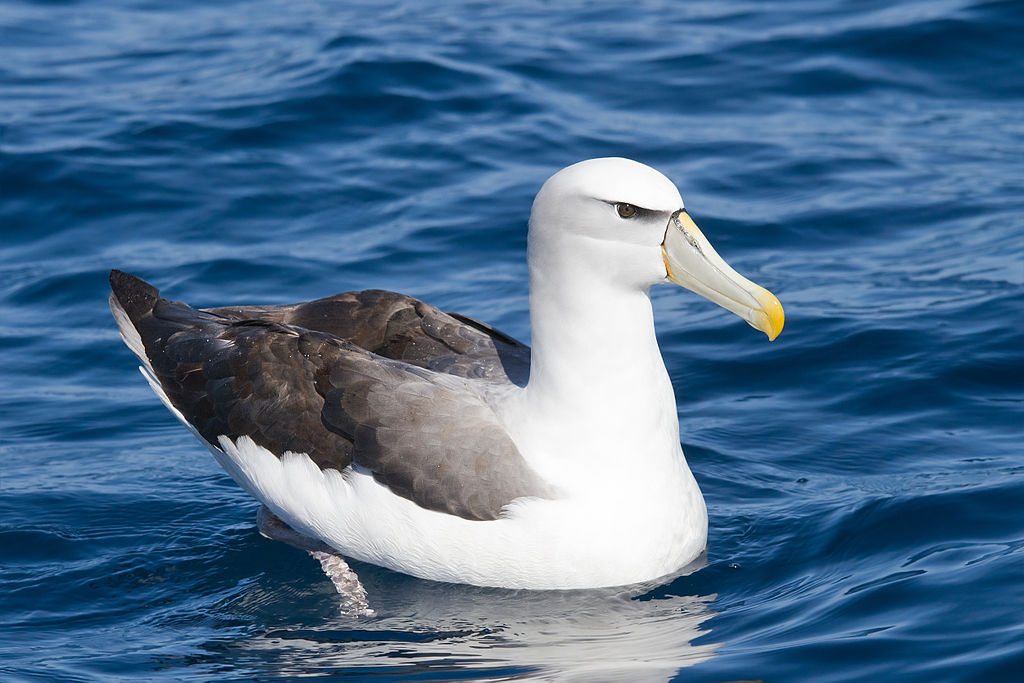
The shy albatross (Thalassarche cauta), also known as the white-capped albatross, is a large seabird with a wingspan reaching up to 2.5 metres. Found primarily around the southern coastlines of Australia and Tasmania, this species is known for its pale grey head, white body, and subtle black edging on the wings.
Feeding on fish, squid, and crustaceans, the shy albatross often follows fishing vessels, where it risks bycatch. Breeding occurs on a few isolated islands in dense colonies, with pairs forming long-term monogamous bonds. Despite being relatively abundant among albatross species, the shy albatross faces ongoing threats from climate change and fisheries, making targeted conservation efforts essential for its protection.
Appearance
The Shy Albatross, with a wingspan of up to 2.5 meters, exhibits a predominantly white body contrasted by a grey back and upper wings. Notable features include its white head, a distinctive dark eyebrow, and a yellowish bill with a black tip.
Behaviour
This species is less gregarious than some other albatross species but can be found in groups when feeding. It is known for its impressive agility in the air, able to maneuver through the air with remarkable finesse, especially during strong winds.
Diet
Shy Albatrosses feed on a diet comprising mainly of fish, squid, and crustaceans. They are adept at surface seizing and occasionally perform shallow dives to capture prey.
Reproductive Cycle
The breeding cycle of the Shy Albatross is annual, with birds returning to the same nesting sites each year. Nests are constructed on steep slopes and cliff faces, where a single egg is laid. Both parents are involved in the incubation and rearing of the chick.
Habitat
The Shy Albatross is endemic to Australia, breeding primarily on small islands off Tasmania, including Albatross Island, Pedra Branca, and the Mewstone. Outside the breeding season, they disperse across the Southern Ocean, venturing as far as the waters of the Drake Passage. Note- it is very rare to see them in the Drake Passage.

